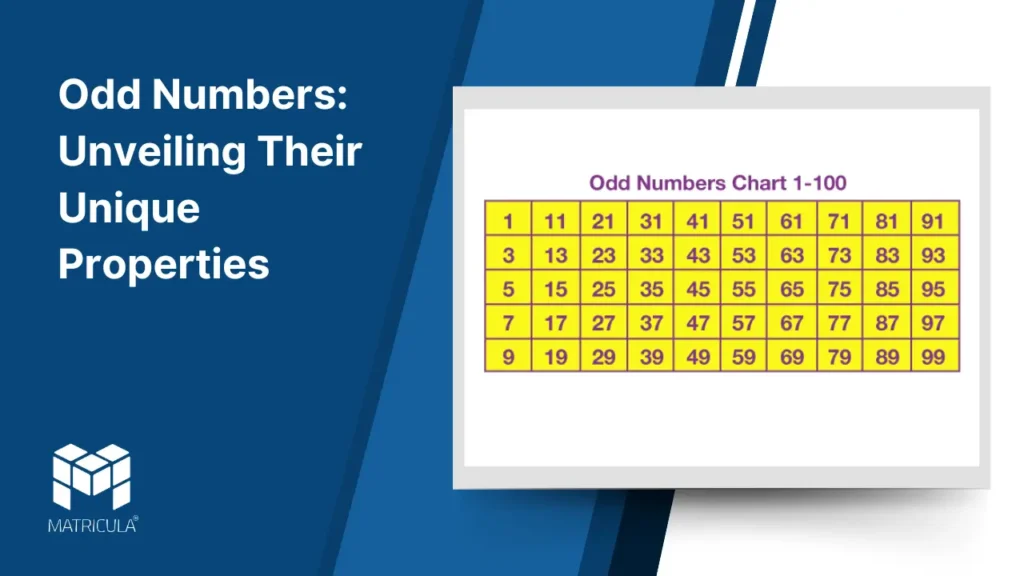Odd numbers are a fascinating and fundamental part of mathematics. Recognized for their distinct properties and behavior, odd numbers form an integral subset of integers and play an important role in arithmetic, algebra, and number theory. Their unique nature sparks curiosity and contributes to various applications in mathematics and beyond.
What Are Odd Numbers?
Odd numbers are integers that cannot be evenly divided by 2. In other words, when an odd number is divided by 2, it leaves a remainder of 1. Examples of odd numbers include 1,3,5,7,9,11,…. Odd numbers alternate with even numbers on the number line, creating a rhythmic sequence of integers.
Mathematically, odd numbers can be expressed in the general form:
n = 2k+1,
where k is an integer.
Properties of Odd Numbers
Odd numbers possess several distinctive properties:
Addition and Subtraction:
- The sum or difference of two odd numbers is always even.
For example: 3+5 = 8. - The sum or difference of an odd number and an even number is always odd.
For example: 3+4 = 7, 9-2 = 7.
Multiplication:
- The product of two odd numbers is always odd.
For example: 3×5 = 15.
Division:
- Dividing an odd number by another odd number does not guarantee an odd quotient. For instance, 9÷3 = 3, but 15÷5 = 3 (both odd), while 15÷7 = 2.14 (not an integer).
Odd Power:
- Raising an odd number to any power results in an odd number.
For example: 33 = 27, 52 = 25.
Representation on the Number Line
Odd numbers alternate with even numbers on the number line, creating a clear pattern. The sequence of odd numbers is infinite and can be seen as 1,3,5,7,9,…extending indefinitely in both positive and negative directions.
Applications of Odd Numbers
Odd numbers have widespread applications in various fields:
- Mathematics: Used in sequences and series, as well as solving problems in number theory.
- Computer Science: Employed in algorithms, coding patterns, and data structuring.
- Art and Design: Odd numbers are often used in aesthetics, as they provide a sense of balance and harmony.
- Daily Life: Odd numbers appear when grouping items, distributing resources, and performing other practical tasks.
Interesting Facts About Odd Numbers
- Prime Odd Numbers: All prime numbers, except 2, are odd. This is because 2 is the only even prime number, as every other even number is divisible by 2.
- Odd Magic Squares: In mathematics, magic squares often rely on odd numbers to create symmetrical and intriguing patterns.
Sum of Odd Numbers: The sum of the first n odd numbers is always equal to n2.
For example: 1+3+5 = 9 = 32.




